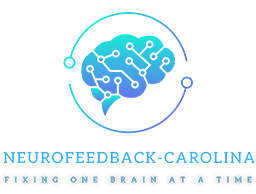Improve Autism Spectrum Outcomes in Rock Hill SC
Ground-breaking work with neuroplastic (brain learning) techniques is yielding results that are rewriting the book on what is possible in brain development. Autism spectrum, dyslexia, and developmental disorders are complex, and there is no “one size fits all” solution. Rewiring the brain is a step-by-step process; there are no quick fixes, but steady improvements can be made.
Dr. Bentley, owner of Neurofeedback Carolina in Rock Hill, will begin with a comprehensive intake to determine which brainwave patterns are imbalanced. After listening to your concerns and answering your questions, together you all can determine if neurofeedback training in Rock Hill SC can offer help in improving a loved one’s brain function.
You Know Your Child in Rock Hill SC
Parents know what is working and what isn’t, where their children struggle, and where they don’t. During a free initial consultation, there will be a one-on-one discussion concerning your goals where we can explain how neurofeedback could be part of a treatment protocol going forward.
Next, a neurofeedback training protocol will be designed to help brainwave patterns become more flexible, improving function, restoring emotional balance, and increasing processing speed. These protocols are personalized to each individual and based on the results of the individual brain map (also called, qEEG or quantitative electroencephalogram).
Neurofeedback Can Produce Long-Lasting Improvements
Neurofeedback trains patients to better control their own brainwaves using audio and visual feedback. While in a regular neurofeedback training session, brain waves are detected through sensors placed on the scalp. This allows us to measure brainwave output while the patient relaxes, watching a movie or video that holds their interest.
These measurements provide “feedback” to the brain in the form of changed audio and visual inputs. If you were present during a session, which is typical, you would notice that the video will go in and out of focus. This feedback is in response to measurements of a child’s brainwave output as they watch the movie or video. Subconsciously, the brain learns to generate brainwave patterns that make the video or movie go back into focus. This process repeats many times giving the brain time to learn and establish new more balanced brainwave patterns.
Neurofeedback Is All Natural
The process of learning using repetition and feedback is known as “operant conditioning.” This is a natural process we use every day when learning a new skill, such as riding a bicycle. To learn how to keep your balance, you just kept getting back on the bike, and, in most cases, falling and bumping into things, until your brain learns the proper movements to ride the bike successfully. After a while, you are riding, talking to your friends–all without even consciously thinking about it!
That’s exactly how neurofeedback produces improvements in brain efficiency. Over time, just like with learning to ride a bike, new neural pathways are built, allowing each individual to think more clearly. One of the biggest changes parents notice after a child with autism has received neurofeedback therapy is an improvement in their ability to communicate.
Schedule a Complimentary Evaluation Today
Neurofeedback therapy at Neurofeedback Carolina is ready to help you find therapies to help your child with autism function more optimally. Find out if neurofeedback could be part of your treatment regimen and how it can make a difference in your child’s life. Call us at (803) 992-3510 or schedule a free initial consultation with Dr. Mark Bentley, D.C.



